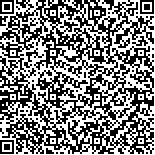下载中心
优秀审稿专家
优秀论文
相关链接
摘要

对流层大气作为电波传播的主要媒介,其大气剖面参数直接影响无线电系统的作用距离和导航、定位精度,因此,研究大气剖面的微波遥感技术,尤其是大气反常结构,对分析评估无线电信息系统在复杂大气环境条件下工作性能和提供电波折射修正精度等具有重要的应用价值。中国东南沿海地区一直是研究的热点区域,本文选取青岛、射阳、厦门、海口4个站的气象探空仪观测数据,统计了这些地区大气波导的平均高度和厚度,对采用地基多通道微波辐射计的天顶和扫角亮温遥感其参数的算法进行了初步探索,提出了改进的组合神经网络算法来判别并遥感大气波导。同时,使用多年的探空数据对该算法进行了仿真验证,并用青岛气象站的实测数据验证了该算法的精度。结果表明该算法可用于遥感大气反常结构,并且与以往的算法相比更加实用、有效,可为雷达、通信、导航等系统设备提供环境信息保障。
As the main medium of radio wave propagation, atmospheric profiles influence the operating range of radio systems and the accuracy of navigation and location systems. Therefore, the research on the techniques of microwave remote sensing for atmospheric profiles, especially their abnormal structure, is important for evaluating the performance of radio information systems and improving the accuracy of radio refraction correction in complex atmospheric environment.
A microwave radiometer provides continuous thermodynamic (temperature, water vapor and moisture) soundings during clear and cloudy conditions. The radiometric profiler observes radiation intensity along with zenith infrared and surface meteorological measurements. Historical radiosonde and neural network or regression methods are used for profile retrieval. The southeast coastal area of China has always been a research hot spot. In this study, radiosonde data of Qingdao, Sheyang, Xiamen and Haikou were selected to compute the average height and thickness of the atmospheric waveguide. We carried out a preliminary exploration to retrieve algorithms. We put forward the combined neural network algorithm to discriminate and retrieve the atmospheric waveguide. Meanwhile, the feasibility of this method was demonstrated with the results simulated by historical data in Qingdao, Sheyang, Xiamen and Haikou and measured data in Qingdao.
This method is used for remote sensing the atmospheric abnormal structure, and the radiometer can retrieve the atmospheric waveguide. In this study, a new idea is provided for the following atmosphere waveguide. However, improvement is still warranted, considering the lack of depth of the study. Two problems are discussed in this study. First, inversion accuracy is low because of the few samples of atmospheric waveguides extracted from the radiosonde data. Second, the type of atmospheric waveguide is not judged, and the model time is long because of the high resolution. We hope to overcome these problems by improving and adjusting the algorithm in the future.
Radiometric profiling provides continuous temperature and humidity soundings up to 10 km height in clear and cloudy conditions and low-resolution cloud liquid soundings. The accuracy of the radiometric temperature and humidity soundings is equivalent to that of the radiosonde soundings. Ground-based multi-channel microwave radiometry has been proven to be a powerful tool for sensing atmospheric waveguide as compared with past methods. It can retrieve continuous atmospheric waveguide and provide environmental information for radar, communication, and navigation systems. The issue of atmospheric waveguide involves electromagnetic fields, radio meteorology, and numerical weather forecasts. Future work should use multiple devices and study atmospheric duct inversion in combination with numerical weather prediction methods to retrieve the waveguide and improve the accuracy of duct prediction.

